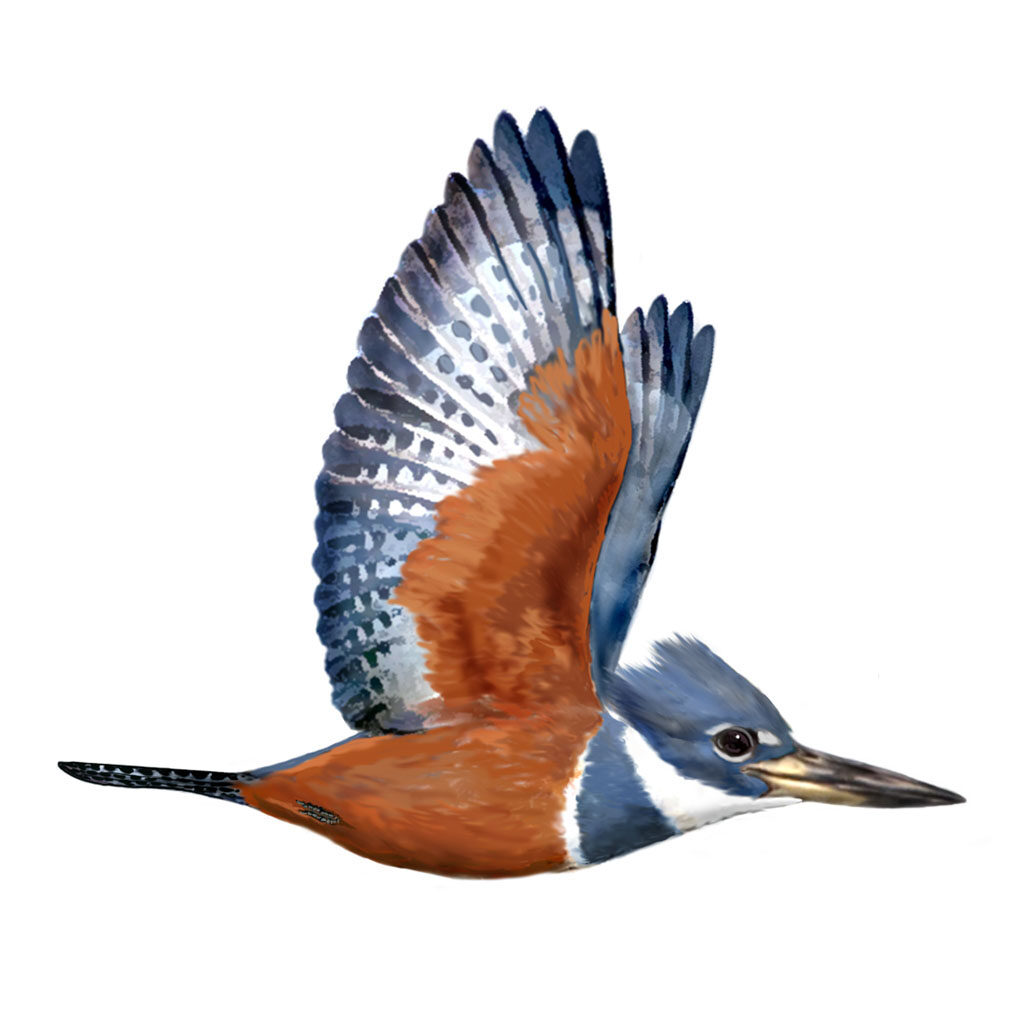Ringed Kingfisher

Even if you aren’t an avid bird watcher, you’ll probably be impressed if you sight a Ringed Kingfisher. It’s the largest kingfisher in the western hemisphere, and is found around bodies of water from Texas to the southern tip of South America. It has an amazingly huge beak, allowing it to take fish up to 6″ long. It doesn’t pass up an occasional swimming frog or small snake if it gets the opportunity.
The female Ringed Kingfisher resembles an oversize Belted Kingfisher, commonly spotted in the U.S. That’s a female in the image above. The male has a solid cinnamon-red underside joining the white chin without a blue band.
You’re likely to spot this kingfisher by zeroing in on its raucous clackety chatter, which it makes when disturbed. Look for it on dead branches or other perches fifteen to thirty-five feet above the water. A regular “tchack….tchack….” overhead might be a Ringed Kingfisher passing high above, alone or with a partner. Listen to its call here.
You might find a nesting area near the water, but Ringed Kingfishers may tunnel their nests into vertical earth banks up to a mile from water. In the US they tend to nest singly, but in the tropics they often use a communal nesting area. Check dirt banks for holes 2-3” across into which a kingfisher might plunge with a fish for its nestlings. The nest chamber could be as far as 8’ into the bank. Three to six chicks are fed by both parents, and after they fledge at about five weeks, they hang out with the adults until they get the hang of spotting fish or other prey beneath the water’s surface, plunging headfirst into the water, and successfully flapping back up to the perch with a meal. More good info here if you’re interested.